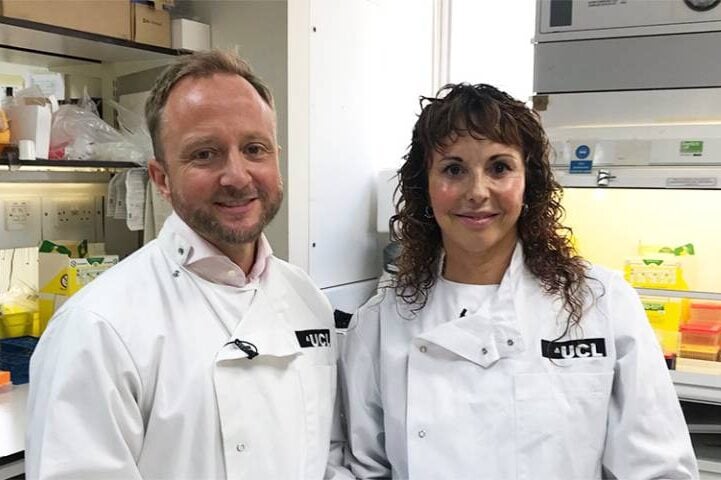
By Raquel (Rocky) Feroe, Kristine Kowalchuk, Trevor Hancock, Jane E. McArthur
As physicians, we take what’s often referred to as the Hippocratic Oath that, among other things, commits us to “first, do no harm.”
And as physicians who have taken this oath, it is challenging to reconcile this ethical obligation with the approaches used by Health Canada’s Pest Management Regulatory Agency.
The suffix “-cide” means killing in its Latin root. The word pesticide therefore means killing pests – be they weeds, fungi, insects or rodents. Yet, we have adopted an interpretation that softens or betrays its true definition. Under Health Canada’s Pest Management Regulatory Agency regime and the Pest Control Products Act, “cide” becomes control, and the targets of the control are living things deemed “pests.”
In Silent Spring, published more than 60 years ago, Rachel Carson wrote about the impact of pesticides on squirrels: “The head and neck were outstretched, and the mouth often contained dirt, suggesting that the dying animal had been biting at the ground.” She asks, “By acquiescing in an act that causes such suffering to a living creature, who among us is not diminished as a human being?”
A squirrel was found in such a state in a backyard in Canada in early June last year, two bright green cakes of rodenticide bait and multiple pieces of packaging found nearby. Another squirrel was sitting in a tree eating yet another green bait cake. Two days later, that squirrel was dead on the sidewalk, head outstretched, its mouth full of dried leaves.
Rodenticide poisons are meant to be highly enticing to wildlife and do not just kill mice – it kills anything that eats it, including squirrels, chipmunks and birds. It also kills mouse predators who have eaten poisoned mice, including weasels, hawks and owls. Unsurprisingly, rodenticides are also dangerous for pets and children.
Harm or death to animals can be indicators of environmental hazards and should be read as an early warning system of the need for health and environmental interventions. If it kills squirrels, it’s hardly going to be good for us or any of the other creatures that share our environment.
So, the use of a “risk management” framework for regulating toxic pesticides in Canada is concerning. The approach applies an “acceptable risk” framework that tolerates a certain level of harm. But acceptable to whom? Certainly not the squirrels. Nor to any children that are exposed, nor to their parents.
By contrast, a hazard analysis or alternatives assessment approach aims to minimize harm and identify alternatives to chemicals that cause environmental damage or harm to humans and other living things.
The earth is now beyond the safe operating limit to support humanity – six of nine planetary boundaries have been exceeded.
The risk management approach is not novel to the Pest Control Products Act, nor to Canada when it comes to regulating toxic chemicals. This is in part why we now find ourselves in what the United Nations calls the “triple planetary crisis” – the combination of toxic pollution, climate change and biodiversity loss. The earth is now beyond the safe operating limit to support humanity – six of nine planetary boundaries have been exceeded, including one that relates directly to “novel entities,” which include new synthetic chemicals such as many forms of pesticides. Their widespread use in agriculture, forestry, parks, gardening and more contributes to high levels of biodiversity loss, in turn threatening the stability of ecosystems and the societies that depend upon them.
The scale and intensity of pesticide use globally and in Canada is unprecedented in human history, and it is largely novel, mainly occurring since the Second World War – so, within a single average person’s lifespan. Pesticide use in Canada is rapidly increasing, up 47 per cent over the past decade. Canada is the fifth largest pesticide user in the world per area of cropland.
Pollution from pesticides is a major and increasing threat to biodiversity and is a contributor to greenhouse gas emissions. Adding to their contribution to our ecological crisis is the microplastic pollution deliberately added to synthetic fertilizers and pesticides used in industrial agriculture.
The health effects and impacts of pesticides are wide-reaching because they are often designed to be persistent. As such, they persist in soil and water, enter food chains and eventually end up in humans – and in much higher concentrations due to a process called biomagnification. As a result, the chemical body burden for people in Canada is of grave concern.
“Pest control products” are linked with serious human health problems including cancers, reproductive harms, developmental effects and neurological conditions. Pesticides are also associated with environmental injustices, including impacts on Indigenous people and their lands, workers, low-income households and children.
Canada’s system of pesticide management repeatedly has been criticized over concerns that product approvals are granted without fulsome consideration of the environmental, human health, cumulative effects and intergenerational harms. Indeed, the basis for stating that the planetary boundary for novel entities has been transgressed is that the sheer number of new chemicals has exceeded our ability to assess them, never mind assessing their cumulative and interactive impacts.
These practices are even more distressing given our understanding of the human exposome – the totality of our exposures from conception through the life course. Increasing pesticide registrations, allowing more chemicals into the market, and adding to the cumulative burden of toxics on the planet and in our bodies runs afoul of the current understanding and state of the human exposome and the increases in health conditions linked with chemical exposures.
Perhaps it’s time for Health Canada – as part of fulfilling its commitment to Target 7 of the Global Biodiversity Framework that aims to “Reduce Pollution to Levels That Are Not Harmful to Biodiversity” – to re-evaluate their approach with an ecologically honest reckoning of what is happening when we use pesticides, herbicides, rodenticides and fungicides.
When we aim to kill as pesticides currently do, harm is done to all who live on this planet. Imagine the future if regulators aligned with physicians in taking the oath to first, do no harm.
—
Previously Published on healthydebate.ca with Creative Commons License
***
–
The world is changing fast. We help you keep up.
We’ll send you 1 post, 3x per week.
Join The Good Men Project as a Premium Member today.
All Premium Members get to view The Good Men Project with NO ADS. Need more info? A complete list of benefits is here.
—
Photo credit: iStock
Disclaimer: This story is auto-aggregated by a computer program and has not been created or edited by healthlydays.
Publisher: Source link










